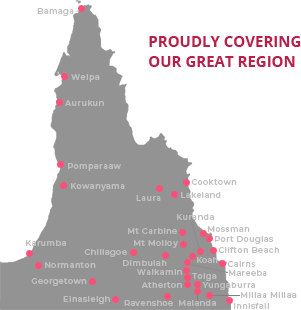General News
1 June, 2025
Heads up on tech neck
IT may seem obvious, yet over 5.3 million Australians are suffering from neck pain due to overuse of phones and other screens, and poor posture when using them.

Tension Neck Syndrome TNS, a musculoskeletal disorder (MSD) commonly known as ‘tech neck’ or ‘text neck’, is increasingly being seen in kids and young adults, not just older persons health issue.
Which is why Australian chiropractors are launching a national awareness campaign about the impact tech neck is having on individuals and the workplace during Spinal Health Week (26 May – 1 June).
The “Heads Up On Tech Neck” campaign is urging Australians – who average 6.8 hours a day online - to “adjust their thinking” about how they use devices like mobile phones, tablets and computers.
“MSDs affect the joints, bones, muscles and multiple body areas (including the neck) and cost the Australian economy over $55 billion annually through direct health costs, lost productivity and reduced quality of life,” President of the Australian Chiropractors Association (ACA) Dr Billy Chow said.
“The health burden on Australians and our economy is and will continue to be significant.
“With over 34 million mobile phone connections and 95% of Australians accessing the internet via a smartphone, the focus of ACA’s annual national Spinal Health Week is on encouraging Australians to adjust their thinking and take proactive steps to improve their spinal health.”
MSDs is estimated to cost the Australian economy over $55 billion annually in lost productivity, healthcare and reduced quality of life.
Tech Neck leads to headaches, neck, shoulder and upper back pain that over time, can lead to changes to the natural curve of the cervical spine.
“When it comes to smartphones, not only must we monitor the length of time we use our devices, but we must be cognisant that overuse and the way we use them can negatively impact our spinal health as well as our mental health,” Dr Chow said.
The study “The Association Between Mobile Phone Usage Duration, Neck Muscle Endurance, and Neck Pain Among University Students” published in Nature (In August last year, examined the links between phone use, duration, addiction, neck muscle endurance, and neck pain in university students.
“Although the study focused on mobile phone use by university students, with almost 87% of Australians now regular smartphone users and 75.5% being daily computer users, it’s fair to consider the findings may be broadly applied to the population generally, particularly young people who’ve grown up using smartphones and tablets,” Dr Chown said.
“While more studies are needed to better understand the implications of incorrect and overuse of technology on spinal health; to help prevent tech neck, we need to re-think how we use devices particularly young people who spend prolonged periods with their head bent forward viewing a smartphone.”
The ACA recommends:
• Limiting recreational screentime to two hours per day, holding devices at eye level to prevent bending the neck forward, changing posture and taking regular breaks every 10 ten minutes to look away from the device and move the neck from side-to-side.
• When using a laptop or a desktop at home, school, university or at work, take postural breaks every 30 minutes for movement and stretching and ensure workstations are ergonomically correct.
• For sufferers of tech neck, medications may offer temporary relief from neck and back pain, however academic studies show opioids do not benefit people with acute neck or back pain (lasting up to 12 weeks).
• Effective treatment is achieved through a combination of strengthening and stretching exercises, manual therapy and postural correction.
National Spinal Health Week (26 May to 1 June 2025) has been the flagship initiative of the (ACA) for almost 30 years, shining a spotlight on spinal health issues.



